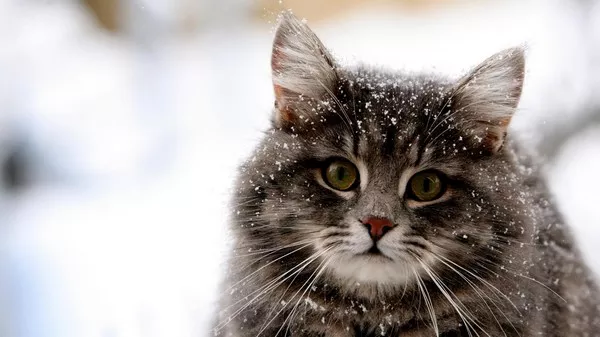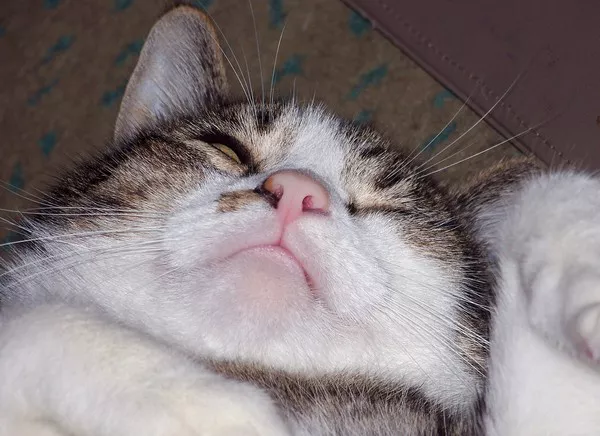Cats are beloved companions, known for their playful antics and independent spirits. As cat owners, we often find ourselves wanting to treat our furry friends, sometimes even sharing our favorite snacks. However, not all human foods are safe for our pets. One of the most dangerous treats for cats is chocolate. This essay will explore the reasons why chocolate is toxic to cats, the amount that can be harmful, symptoms of chocolate poisoning, and what to do if your cat ingests chocolate. Understanding these aspects is crucial for every cat owner to ensure the health and safety of their feline friends.
The Toxicity of Chocolate
Theobromine and Caffeine
Chocolate contains two primary substances that are toxic to cats: theobromine and caffeine. Both belong to a class of chemicals known as methylxanthines. While humans can metabolize these substances relatively quickly, cats process them much more slowly, making them more susceptible to their toxic effects.
Theobromine: This is the main toxic compound in chocolate. It affects the central nervous system and cardiovascular system. Cats have a limited ability to metabolize theobromine, leading to a higher risk of toxicity.
Caffeine: Similar to theobromine, caffeine can also cause adverse effects in cats, though it is present in much smaller amounts in chocolate compared to theobromine.
Types of Chocolate and Their Theobromine Content
The toxicity of chocolate to cats varies depending on the type of chocolate consumed. Here’s a breakdown of common types of chocolate and their theobromine content:
Dark Chocolate: Contains the highest levels of theobromine, ranging from 5 to 16 mg per gram. This type is particularly dangerous for cats.
Milk Chocolate: Contains lower levels of theobromine, about 1.5 to 2.5 mg per gram, but can still be harmful in significant quantities.
White Chocolate: Contains negligible amounts of theobromine (less than 0.1 mg per gram), making it less toxic, but it is still not advisable for cats due to its fat and sugar content.
Toxic Dose Levels
The toxic dose of theobromine for cats is estimated to be about 20 mg per kilogram of body weight, with severe symptoms potentially occurring at doses around 50 mg/kg. For a typical cat weighing around 4 kg (approximately 9 lbs), this means that ingesting as little as 80 mg of theobromine could lead to toxic effects.
Practical Implications
Given the varying levels of theobromine in different types of chocolate, even a small amount of dark or milk chocolate can pose a serious risk to a cat’s health. For example, just a few ounces of dark chocolate could easily exceed the toxic threshold for a cat.
Symptoms of Chocolate Poisoning in Cats
If a cat ingests chocolate, it is crucial for owners to recognize the symptoms of chocolate poisoning. The signs can vary depending on the amount of chocolate consumed and the individual cat’s sensitivity. Common symptoms include:
Vomiting: One of the first signs of chocolate poisoning.
Diarrhea: Often accompanies vomiting as the body attempts to expel the toxin.
Increased Heart Rate: Theobromine stimulates the heart, leading to tachycardia (increased heart rate).
Restlessness or Hyperactivity: Cats may exhibit unusual levels of energy or agitation.
Tremors or Seizures: In severe cases, neurological symptoms such as muscle tremors or seizures may occur.
Increased Thirst and Urination: The diuretic effect of theobromine can lead to increased thirst and urination.
Severity of Symptoms
Symptoms can appear within a few hours of ingestion and may last for several days, depending on the severity of the poisoning. In severe cases, chocolate poisoning can lead to coma or even death, particularly if left untreated.
What to Do If Your Cat Eats Chocolate
Immediate Actions
If you suspect that your cat has ingested chocolate, it is essential to act quickly:
Assess the Situation: Try to determine how much chocolate was consumed and what type it was. This information will be critical for your veterinarian.
Contact Your Veterinarian: Even if your cat appears fine, it’s best to call your veterinarian or an emergency animal clinic for advice. They may recommend bringing your cat in for evaluation.
Do Not Induce Vomiting Without Guidance: While inducing vomiting can be helpful in some cases of poisoning, it should only be done under the guidance of a veterinarian, as it may not always be safe or appropriate.
Veterinary Treatment
If your cat is taken to the vet, treatment may include:
Inducing Vomiting: If the ingestion was recent, the veterinarian may induce vomiting to remove the chocolate from the stomach.
Activated Charcoal: Administering activated charcoal can help absorb the theobromine and prevent further absorption into the bloodstream.
Intravenous Fluids: To help flush out toxins and manage dehydration, the vet may provide IV fluids.
Medications: In severe cases, medications may be given to control symptoms such as seizures or heart arrhythmias.
Prevention: Keeping Chocolate Away from Cats
Educating Family and Friends
One of the best ways to protect your cat from chocolate poisoning is to educate everyone in your household about the dangers of feeding chocolate to pets. Make sure that family members and visitors know that chocolate is toxic to cats and should be kept out of reach.
Safe Treat Alternatives
Instead of chocolate, consider offering your cat safe treats that are specifically formulated for felines. There are many cat-friendly snacks available on the market, including:
Catnip Treats: Many cats enjoy the flavor of catnip, and there are various treats infused with this herb.
Freeze-Dried Meat: Pure protein treats can be a healthy and enticing option for your cat.
Commercial Cat Treats: Look for treats that are low in calories and made with high-quality ingredients.
Secure Storage
Store all chocolate products, whether in bars, baked goods, or candies, in secure cabinets or containers that are inaccessible to your cat. This is especially important during holidays or celebrations when chocolate treats may be more prevalent.
Conclusion
Chocolate is a delicious treat for humans, but it poses a significant risk to our feline friends. Understanding the dangers of chocolate, recognizing the symptoms of poisoning, and knowing how to respond in an emergency are vital for every cat owner. By taking preventive measures and educating those around us, we can ensure that our cats remain safe and healthy. Always remember: when it comes to chocolate and cats, the best approach is to keep chocolate out of reach and offer safe, cat-friendly alternatives instead. Your cat’s health and happiness depend on it.
Related topic:



























